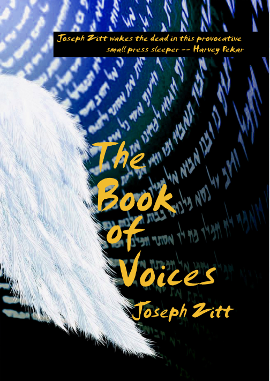The second, Expanded Edition of The Book of Voices contains four more stories (Jonathan, Achinoam, Obadiah, and Asherah) as well as new introductions to all of the stories and a translator’s preface and afterword.
Why?
The Book of Voices, as originally released, was good. But, after seeing how it did on bookstore shelves and online, and, most importantly, after talking with its readers, I knew it could be better. So I accepted the reader comments as bug reports and proceeded to work toward a new release.
One of the most important things that I learned as a technical writer and software developer is that it’s very hard to see how things look to someone who doesn’t know something that you do. (Ever dealt with experts, mavens, or “computer people” who act like you’re an idiot for not spotting something that they see as obvious? Yeah, it’s that problem.)
Having immersed myself in the stories of the Bible all my life and, especially, over the several years of writing the book, I had forgotten that most people weren’t all that familiar with the stories. I did have some folks reading along and commenting as I wrote them, but it turned out to be a skewed sample. made up of members of the interfaith community in which I lived for most of that time, various clergy and teachers of religion, and people in my own family. Few had problems with catching on to what led into the stories and the other tales to which they referred.
Once the book was released, however, people told me that they were having trouble with the book and not getting very far with it. The real kick in the head came when a friend of my mother’s, who was a key person in her own congregation, said that she felt like she had to have a Bible and reference books at hand to do research before reading each of my stories.
I got back to work.
I realized two things: first, that I had to go through the stories and make some of the connections and references clearer; second, that the stories needed introductions to set up the situations and characters. These needed both more extensive and more intelligible Biblical quotes than the single verses used in the first editions and more vernacular explanations of who the voices were and what had happened to them.
This led to another interesting question: Who was writing the introductions, and why? The most obvious choice would be to have the introductions be overtly by me. This, however, felt like it would continually pull people out of the world of the stories. (It works in general anthologies and in, say, collections of stories that are not closely related — Harlan Ellison is probably the king of story introductions, which are occasionally a better read than the stories themselves — but not as well in a book which has a common world and timeline with a recurring framework that ties them together.)
The character of a translator evolved, a person who would write Elisheva’s channeled stories down in English for people who wouldn’t be familiar with them. This became Ariel, who created the current book for stepchildren who had not been brought up with religious training. Further exploration of Ariel found connections to Elisheva’s own life as well as to one of the tales that she channeled, then brought the character forward into contemporary America. (You can read Ariel’s preface online here.)
This also meant that the book would have to be completely typeset again. The publisher suggested that I do it myself, and I leapt at the chance, taking the opportunity to get better at the needed tools (which has led to my becoming the Layout Editor of another small press). I also took the opportunity to work with what I had learned by placing the first edition in my bookstore: while the red-on-brown design worked handsomely online and up close, from a distance the colors and design faded into one another. Working with artist Lauren Curtis, we came up with a design that adapted the original cover by Travis Dixon, casting what had been earth-brown into a night-blue and putting the text in a contrasting gold, in a typeface that, I think, gives more of a sense of human voices.
The book had always been conceived as both a printed book and an audio project, with an extensive supporting website. The audio project is finally getting off the ground, and we’ll be linking the episodes to the related voice pages as they are produced. This website, completely redone and moved to different software than the first, includes my notes and further information on each story, as well as links to related materials. It also presents questions that we might consider about how the issues in each story relates to our own lives (though you are certainly free to skip the heavy questions and read the book simply as entertainment), and threads for comments and conversation.
So that’s the How and the Why of the Expanded Edition. I hope you enjoy the book, and I look forward to hearing your responses.
Joseph Zitt
October 31, 2013


Leave a Reply